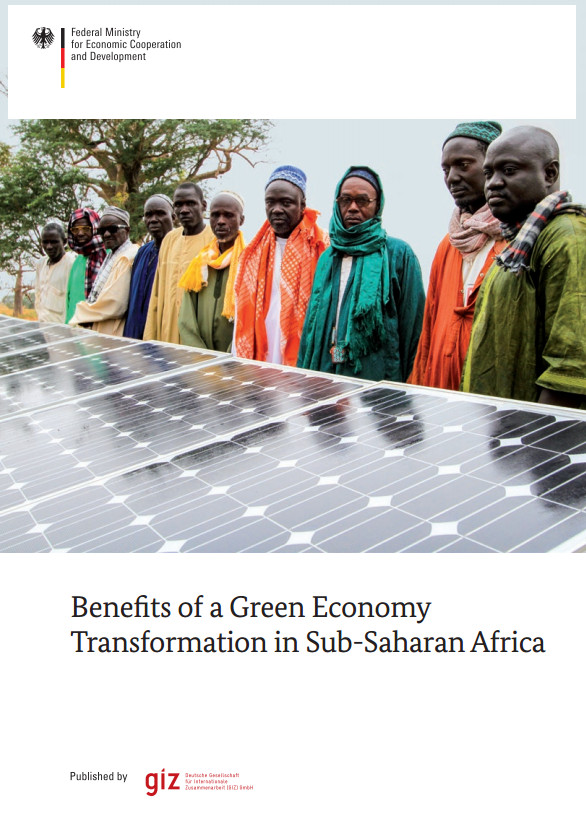Our current growth and development model is gradually reaching its environmental limits. The effects of climate change are increasingly felt and cause substantial costs already now. The majority of the population in Sub-Sahara Africa (SSA) depends on natural resources to secure their livelihoods, but natural resources are often used in an unsustainable manner and thus increasingly destroyed. In order to ensure sustainable development in the future, countries in SSA will have to grow in an environmentally sustainable way by pursuing green growth strategies. However, policy makers often express scepticism about such policies, fearing that green growth could lead to overall lower growth rates and could compromise social development goals such as poverty reduction.
Against this background, the present publication, written by Ecofys for GIZ on behalf of BMZ, puts forth arguments for a green economy transformation for countries in SSA by presenting economic, social and ecological benefits of such a transformation.

*Benefits marked with an asterisk can equally be assigned to economic and social benefits, which is why they are listed twice in this table. In the publication these are explained in detail in sub-section 4.1. Economic benefits.
One of the most eye-catching arguments for a green economy transformation is that green economy strategies also effectively address aspects of social development as well as inequalities. Many green growth initiatives are targeted at natural resources and agriculture, two predominantly rural sectors in which the great majority of people in SSA countries live and work. This gives green growth great scope to improve the lives of people in these areas and situations, addressing poverty in some of the places where it is most keenly felt. Initiatives that help to improve the efficiency of production, provide greater access to modern technology and increase productivity can all change people’s day-to-day costs and income, and the lives that they can lead, directly lifting many people out of poverty and reducing income inequality. For example, when these impacts were modelled for Kenya (see Case 1 in the publication) it was shown that green growth was significantly better at reducing poverty, reducing poverty rates by almost 2 percentage points more than a “business-as-usual” scenario.
The publication outlines key arguments that policymakers can use to make the political and economic case for pursuing a green economy in order to convince stakeholders and the public in the face of (sometimes also uncomfortable) decisions that need to be taken. These arguments include how a green economy can:
- strengthen medium and long term economic prospects;
- reduce exposure to the risks of existing economic growth pathways;
- ensure natural assets and resources provide both short and long term development gains;
- improve quality of life (and as a result secure votes); and
- attract investment and provide political prestige.
The publication also provides recommendations on the range of potential areas for intervention where donors and technical assistance organisations such as GIZ can best support countries in the region to make the transition to a green economy effectively. Recommendations include providing: policy advice; building institutional and human capacity; establishing cooperation, partnerships, and supporting participation and communication; and technical/methodological support.
The full publication is available here. In case of questions and comments, the Sector Project Sustainable Economic Development ([email protected]) remains at your disposal.


